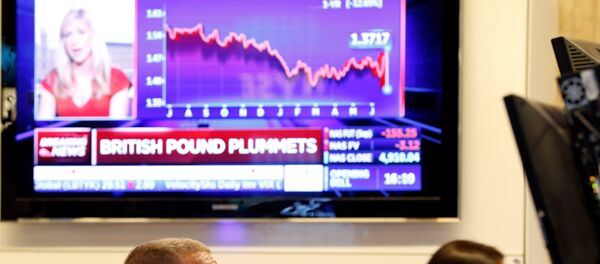Kristian Rouz — The Labor Department released upbeat data on job creation in June and subsequently reported higher disposable incomes among US households. However, this was were followed by news of persistently declining Treasury yields coupled with further layoffs in the banking sector, sending mutually exclusive signals regarding the current state of affairs of the US economy. While the macroeconomic data might suggest a pickup in 2Q16 growth and more solid inflation, the two latter developments indicate an underlying weakness in investment, capital movements and the profitability of most types of commercial activity, all clearly pre-recession developments.
The data-dependent approach of the US Federal Reserve won't be of much use, as there is no clear data-provided indication of where the broader economy is going, thus rendering any policy effort, such as decisions on base interest rates, potentially hazardous given the unpredictability of its consequences. For want of a coherent policy direction, the overall efficacy of economic management is declining, only spurring investors' flight for safety and undermining any hope for expansion in "Main Street" entrepreneurialism, once the cornerstone of America's prosperity.
Now available: Weekly data on the Assets and Liabilities of Commercial Banks in the United States: https://t.co/VsdVlA4fd0 #FedData
— Federal Reserve (@federalreserve) 8 July 2016
The Federal Reserve's assessment of economic development and policy response is lagging by at least three weeks due to the data-dependence of their approach to monetary policy: by the time statistical reports are released, new domestic and international challenges emerge, rendering Fed policy measures possibly redundant. A prominent example was provided by the Brexit vote: while the Fed was only gearing up to address the weak job market gains reported for May, a new wave of global anxiety hit Wall Street stocks overnight, marring US growth projections for the rest of this year.
Meanwhile, although the labor market improved slightly in June, driven by gains in employment among workers over 55 years of age, this is hardly a relief signal. The Fed's index of job market conditions dropped for a sixth consecutive month in June, contradicting the upbeat Labor Department report. The Labor Market Conditions Index slumped 1.9 percent in June, signaling the longest-lasting losing streak since the Great Recession, even though Labor Department-reported non-farm gain in payrolls rose to 287,000 last month, compared to a dismal just-above-zero (11,000) in May.
"Recession unfortunately looms, that is what the bond market tells us," Steve Cortes of BGC Partners in New York said. "We are doing better than the rest of the world but we are still not doing great."
Meanwhile, US hiring is expected to slow as 2016 nears its end. Most optimistic assessments suggest an average pace of hiring of 150,000 a month, which is below the 200,000 average pace of hiring required for a sustainable advance in core prices index, which would drive overall growth.
As investors pull their capital from the US real sector buying up Treasury notes, the gap between the return on short-term 3-month bonds and 10-year Treasuries is closing at an accelerated pace — historically, an indication of a looming recession.
"This relentless flattening of the (Treasury yield) curve is worrisome," Deutsche Bank said in an analytical note. "Given the historical tendency of a very flat or inverted yield curve to precede a US recession, the odds of the next economic downturn are rising."





